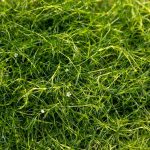
Prion protein misfolding diseases, such as Creutzfeldt-Jakob disease (CJD), mad cow disease, and chronic wasting disease, are a group of fatal neurodegenerative disorders characterized by the accumulation of abnormally folded prion proteins in the brain. These misfolded proteins lead to brain damage and the subsequent loss of neurological function. Understanding the mechanisms behind prion protein misfolding and developing effective therapies require robust research models. Animal models have proven invaluable in this regard, offering insights into disease progression, pathology, and potential treatments.
Importance of Animal Models
Animal models are essential for studying prion protein misfolding diseases because they can replicate the human disease pathology, allowing researchers to observe disease progression in a controlled environment. These models help identify the molecular and cellular mechanisms underlying prion diseases and enable the testing of therapeutic interventions before they are applied in human clinical trials.
Common Animal Models
Several animal species are used in prion research, each offering unique advantages. The most commonly used animal models include mice, hamsters, and larger mammals such as sheep and cattle.
Mice
Mice are the most widely used animal model in prion research due to their well-characterized genetics, short lifespan, and the availability of various genetic manipulation techniques. Transgenic mice that express human prion proteins have been developed to study the transmission and pathogenesis of prion diseases. These models have provided significant insights into how prion proteins misfold and aggregate, leading to neurodegeneration.
Hamsters
Hamsters have also been used in prion research, particularly for studying the scrapie form of prion disease. They exhibit rapid disease progression and clear clinical symptoms, making them suitable for short-term studies and therapeutic testing. Hamsters have been instrumental in understanding the species barrier in prion transmission, where prions from one species can infect another.
Sheep and Cattle
Sheep and cattle are natural hosts for prion diseases such as scrapie and bovine spongiform encephalopathy (BSE), respectively. These larger mammals are crucial for studying the natural disease course and for understanding the epidemiology and transmission dynamics of prion diseases in livestock. Research in these animals has been vital for developing strategies to control prion outbreaks in agricultural settings.
Mechanisms of Prion Protein Misfolding
Animal models have provided crucial insights into the mechanisms of prion protein misfolding. Prion diseases are unique because they can be inherited, sporadic, or acquired through infection. The prion protein (PrP) can misfold into a pathogenic form (PrP^Sc) that induces the misfolding of normal prion proteins (PrP^C), creating a cascade of protein misfolding.
Research using animal models has shown that the accumulation of PrP^Sc leads to the formation of amyloid plaques, which are associated with neurodegeneration. Studies in transgenic mice have demonstrated that specific regions of the prion protein are critical for misfolding and disease progression. These findings have helped identify potential targets for therapeutic intervention.
Testing Therapeutic Interventions
One of the significant advantages of animal models is their use in testing potential therapies for prion protein misfolding diseases. Various approaches, including small molecules, antibodies, and gene therapy, are being evaluated in animal models to assess their efficacy in preventing or reversing prion misfolding and aggregation.
For instance, small molecule inhibitors that prevent prion aggregation have shown promise in mouse models. These compounds can cross the blood-brain barrier and target misfolded prion proteins in the brain. Similarly, antibody-based therapies are being tested to neutralize PrP^Sc and prevent the spread of prion pathology.
Gene therapy approaches, such as silencing the expression of the prion protein gene (PRNP), are also under investigation. Studies in transgenic mice have shown that reducing PrP^C levels can significantly delay disease onset and progression. These findings offer hope for developing effective treatments for prion diseases.
Challenges and Future Directions
Despite the progress made using animal models, there are still challenges in translating these findings to human prion diseases. Differences in prion strains, species-specific responses, and the complexity of prion biology can complicate the extrapolation of animal data to humans.
Future research will focus on developing more refined animal models that better mimic human prion diseases. This includes creating models that express human prion proteins more accurately and investigating the role of co-factors in prion misfolding. Additionally, advancing imaging techniques and biomarker discovery will enhance the ability to track disease progression and therapeutic responses in animal models.
Conclusion
Animal models have been indispensable in advancing our understanding of prion protein misfolding diseases. They provide a platform for unraveling the complex mechanisms of prion pathology and testing potential therapeutic interventions. Continued research using these models holds the promise of developing effective treatments for these devastating diseases and ultimately translating these findings into clinical applications for human prion diseases.






